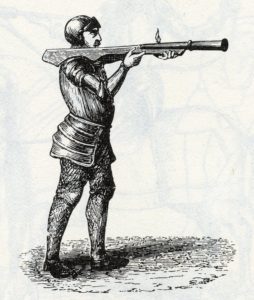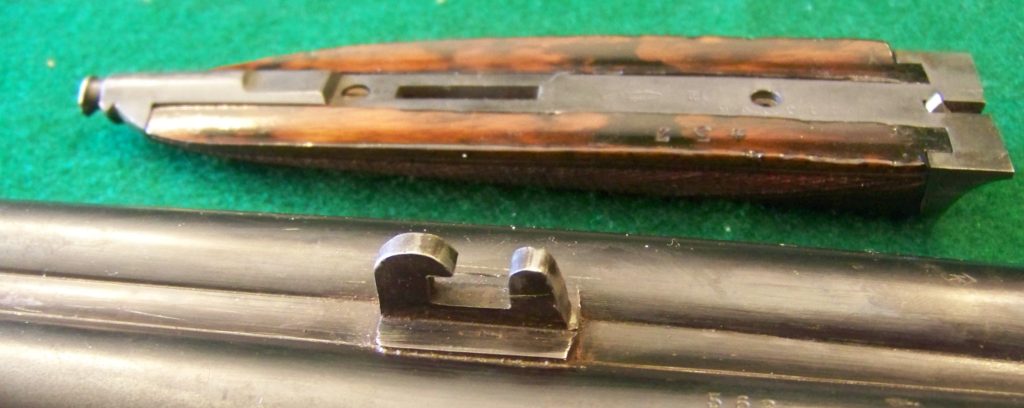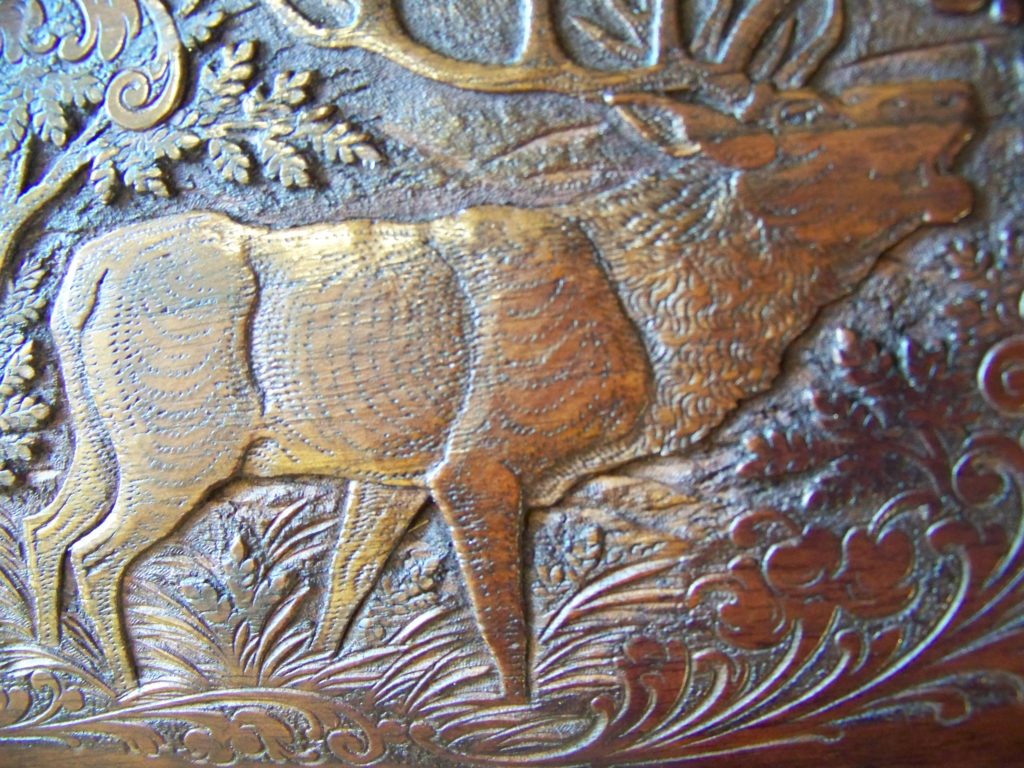Stocks
Stocks
By Larry B. Schuknecht
Walnut has for centuries been recognized as the standard wood for firearm stocks. Basically there are two species of walnut. One is Juglans Regia or what is known as English, French, Circassian, Moroccan, Italian, Turkish, etc. The other is Juglans Nigra or what is known as black walnut.
While Juglans Regia is found growing in many parts of the world Juglans Nigra is found almost exclusively in North America. Almost every walnut gun stock made in Europe is some type of Juglans Regia.
To add confusion into the discussion there is Bastogne and Claro walnut. These two are hybrids of English and Black walnut. The Claro is grown only in the Claro Valley in California.
Circassian is sometimes confused with Turkish and is the favored stock wood by many who desire fine wood. The term Circassia comes from the Caucasus where that wood originates. That area of the world was once part of the Ottoman Empire. It now includes the countries of Russia, Turkey, Iran, Georgia, Armenia and Azerbaijan. The area lies between the the Black and Caspian Seas. Since the 1980’s wood coming from Turkey has been singled out and recognized as such.
The color and structure or features of the wood are largely determined by the climate and soil conditions where it is grown. The wood can vary greatly from straight grain with no figure to burl which is all figure. Europeans have long favored plainer stock wood while Americans have favored highly figured wood that is showy but weaker.
Design
Any discussion of stock design should start with the history of stock

development. The first hand held firearms were literaly Hand Cannons. These consisted of a barrel attached to a straight piece of wood and fired with a match while holding it to the shoulder. The piece of wood or “pole” was held on top of the shoulder or under the arm pit. W.W. Greener in The Gun and its Development states that the first recorded use of a hand-cannon in Germany took place in 1381 when the Town of Augsburg supplied thirty men armed with hand-cannons to the contingent of the Suabian towns in their war against South German nobles. These cannons were known as bastons-a-feu or “fire sticks”. Another term used for these barrels held to a piece of wood with Iron bands was a “Hand Culvern”. The stock or wood attachment is referred to as a “pole” stock when it was of round configuration. When it was of square or rectangular configuration it is called a “beam” stock.

With the development of the matchlock in the 15th Century the stocks began to broaden in depth behind the barrel and have a more pronounced drop.

From a crude simple square or round profile the stock began evolving into a shaped profile with rounded or beveled edges.  It was still not held against the shoulder but against the cheek.
It was still not held against the shoulder but against the cheek.

With the development of the Arquebus the stock evolved into a fish tail shape and began being held to the Shoulder instead of above or below it.


With the introduction of the Flint lock the shape of the stocks began to be rounded and these were referred to as “Club Stocks”.

The Club Stock wrist eventually became longer and of a round profile. These gun stocks are referred to as a “Hand Rail” form because the rounded wrist resembles a stair hand rail and led to the modern stock form as we know it today.

To view examples of elaborate stock carving from the Flintlock and Percussion periods click Here.
Modern Stocks and their features.


Above: A Semi, Prince of Wales or Bag grip

Above: A Full Pistol Grip

Below: Stock carvings done on a post War Mauser

Checkering
There are three basic types of checkering, Diamond, Fish Scale and Basket Weave. The most common and that used on most production guns is the simple Diamond style. The European Diamond style differs from the American Diamond style. Before the middle of the 20th Century European Diamonds had flat tops and the grooves were cut with a tool which was more like a thin saw that cut with nearly parallel sides on the groove. The American Diamond style is cut with a 60 degree or 90 degree tool which forms a pyramid shape to each diamond.
Checkering patterns almost always have some form of border. These vary greatly from a single line to elaborate carved details. Makers often favor one type of border but are never limited to that border but will do any type the customer prefers.


 Fore-end Fasteners
Fore-end Fasteners
The earliest fore-end fasteners were the wedge type which was a hold over from muzzle loading guns. These used a rectangular shaped pin or “wedge” that passed from one side of the fore-end wood, thru a loop on the barrels and out the other side of the wood. A wedge fastened forend is shown below.

The Deeley & Edge Latch
The Deeley & Edge Latch was developed in England but was adopted by gunmakers all over continental Europe because of it’s ease of use, rugged and dependable construction and neat appearance.

A Deeley & Edge latch on a Charles Daly -Lindner gun
 Above is a Charles Daly fore-end made by Lindner with a Deeley & Edge latch.
Above is a Charles Daly fore-end made by Lindner with a Deeley & Edge latch.
The Anson Latch
As with the Deeley & Edge latch the Anson Latch was an English development adopted by many European makers. It incorporated a rod with surfaced into a button at the forend tip. When pushed in this rod moved a spring loaded block which intersected with the barrel lug. This design was rugged and gave the forend a clean appearance. Below is the Anson forend and barrel lug.


The Snap Forend
The snap forend uses an spring loaded plunger in the fore-end iron that catches on a notch on the barrel lug. While commonly used on lower cost guns it is sometimes found on higher grades. Below is a snap fore-end from a J.P. Sauer and Sohne side by side combination gun.







